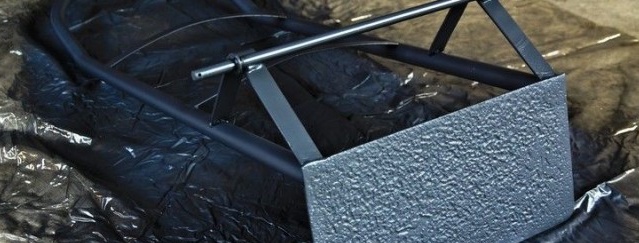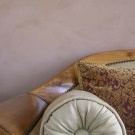Anticorrosion primer
Anticorrosive primer, like any other, is designed to improve the adhesion of the paint to the surface. Performing this task no worse than conventional primers for metal, it serves as additional protection against corrosion. In everyday life, where it is impossible to perform complex work such as galvanizing the structure, it perfectly helps to cope with any rust.
Anticorrosion primer has the following varieties:
- insulating;
- phosphating;
- passivating;
- tread;
- rust converters (rust primer).
Insulating primer - This is a polymer coating that mechanically blocks the access of oxygen and moisture to the metal. It contains zinc white, talc and barite. An insulating primer is the cheapest but most ineffective rust protection. It is used mainly for ferrous metals.
Phosphating anticorrosive the primer, after application to the metal, enters into a chemical reaction with it, forming a layer of insoluble salts, which not only improve the adhesion of the paint to the surface, but also prevent underfilm corrosion. This process is called cold phosphating. The phosphating primer lays well on galvanized steel, and any kind of paint can already be applied on top of it.
Passivating Primers, as a rule, contain chromates of various metals, which form a dense oxide film that slows down or prevents corrosion. Such primers are much more reliable than insulating ones.
Tread primer consists of metal powder, the electrode potential of which is lower than that of the protected structure. Thus, the metal in the primer is the first to enter the oxidation reaction.
Rust primer, or a rust converter (acidic or acid-free), is used when cleaning from corrosion is not possible or economically disadvantageous. Rust is converted to insoluble compounds that improve the adhesion of the paint to the substrate. Its huge disadvantage is that it is impossible to measure the required amount of substance: in some areas there will be an excess of primer, in others - a disadvantage. A rust primer is not suitable for cleaning metal from scale or for painting an unhealed structure.
With all the advantages of modifiers, the best protection against rust is achieved by applying a phosphating, passivating or tread primer to a metal that has been cleaned from corrosion.



